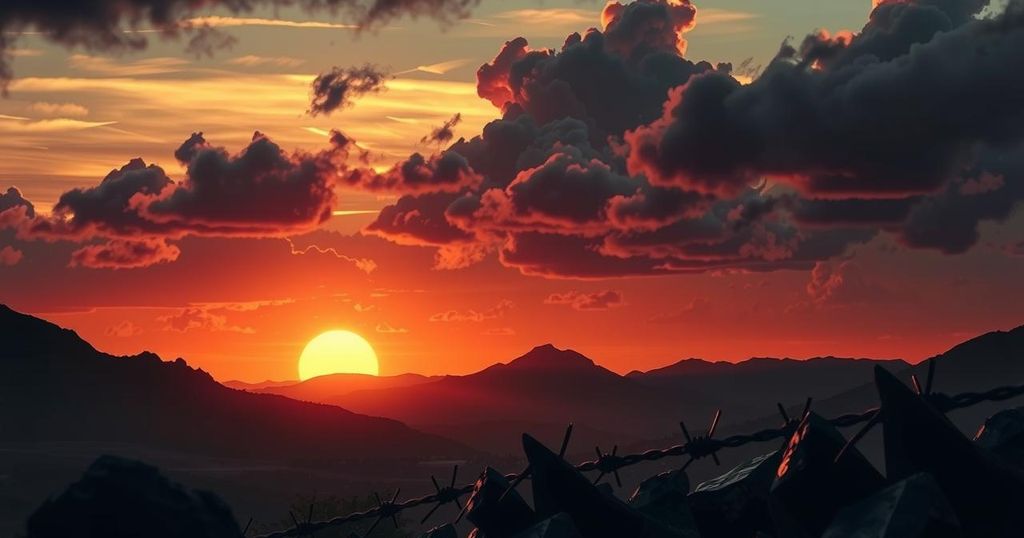World news
AFC, AFRICA, ARMY, BUKAVU, CIVIL WAR, CONGO (KINSHASA), CONGO RIVER ALLIANCE, CORN, CORNEILLE NANGAA, DEMOCRATIC FORCES FOR THE LIBERATION OF RWANDA, DEMOCRATIC REPUBLIC OF CONGO, DISPLACEMENT, DR CONGO, DRC, FDLR, GOMA, HUMANITARIAN, LAKE KIVU, M23, MINOVA, REFUGEE CRISIS, REFUGEES, REUTERS, RWANDA, UN, WAR
Jamal Robinson
0 Comments
Escalation of Conflict in the Democratic Republic of Congo: M23 Rebels Take Goma
M23 rebels have captured Goma in eastern DRC, escalating an already dire conflict that has displaced over a million people. With a leadership primarily composed of Tutsis, M23 claims to protect its community from Hutu militias. Control of Goma grants M23 economic power through access to valuable minerals, while the ongoing conflict has significant humanitarian repercussions and global implications due to disruptions in mineral supply chains.
The M23 rebel group in the Democratic Republic of Congo (DRC) has taken control of Goma, a significant city in the eastern region, and is currently advancing toward Bukavu. This development represents a marked escalation in a prolonged conflict, which has already displaced over a million individuals and prompted widespread violence. The worsening humanitarian situation sees hospitals overwhelmed and many fleeing their homes to escape the turmoil.
The M23 group’s leadership is primarily composed of ethnic Tutsis who contend they are fighting to protect their community from aggression by armed Hutu militias, especially the Democratic Forces for the Liberation of Rwanda (FDLR). M23, established following a 2009 peace agreement, accuses the Congolese government of failing to fulfill commitments regarding political representation and the integration of Tutsis within the army and government, prompting renewed hostilities in 2022.
On Monday evening, M23 rebels entered Goma, initially encountering resistance, particularly near the airport. However, by Tuesday evening, they had taken control of the airport, with numerous government soldiers and allied militia surrendering. Reports confirm that M23 fully controlled Goma by Wednesday morning, with corpses still visible in the streets, emphasizing the scale of devastation.
Goma’s strategic importance cannot be overstated; it is situated on the border with Rwanda and is adjacent to rich mining zones that produce essential minerals, including gold, tin, and coltan. The seizure of Goma not only grants M23 control over lucrative trade routes but also enhances their economic power, with the group reportedly generating approximately $800,000 monthly from coltan production taxes.
The conflict in eastern DRC is historic, rooted in over three decades of unrest that followed the Rwandan genocide. Currently, eastern DRC is home to over 100 armed factions competing for power and the region’s vast natural resources. Rwanda and Uganda’s military involvement in DRC dates back to the late 1990s and has resulted in catastrophic consequences, often referred to as “Africa’s World Wars.”
Accusations against Rwanda for providing military support to M23 have been voiced by the Congolese government alongside UN officials and Western nations. A UN report cited in 2022 presented significant evidence of Rwandan soldiers fighting alongside the rebels, although Rwanda has consistently denied these claims, defending its actions as protective in nature.
The conflict in the DRC transcends regional borders, with global implications due to the country’s vast mineral resources essential for technology. Ongoing violence disrupts supply chains and threatens to inflate prices for electronic goods. The UN’s MONUSCO peacekeeping mission has been pivotal in countering M23, but the deteriorating security situation has temporarily halted the planned withdrawal of its 11,000 peacekeepers from the region.
Following Goma’s fall, UN forces evacuated their personnel and many government officials sought refuge within UN bases. The Congolese military, attempting to bolster their efforts, enlisted private contractors, including Romanian mercenaries, with many surrendering in the face of escalating conflict. The Southern African Development Community extended military support to the DRC; however, losses on both sides characterize recent battles.
International pressure mounts on Rwanda to cease its alleged support for M23. The unfolding situation requires close observation as the rebel group’s control of Goma presents pivotal moments ahead, particularly concerning an advance toward Bukavu, which could further exacerbate the crisis.
The M23 conflict in the Democratic Republic of Congo is multifaceted, involving regional dynamics, political grievances, and resource competition. The DRC has faced protracted violence for over 30 years, following the Rwandan genocide, leading to the emergence of numerous armed groups. M23, primarily composed of Tutsis, contends that the Congolese government has failed its commitments, prompting renewed conflict. Goma’s significance as a strategic economic hub adds layers of complexity to the ongoing situation, as control of this city allows access to vast mineral wealth.
The M23 rebel group’s recent takeover of Goma signifies an escalation in long-standing conflicts within the DRC, with disastrous humanitarian impacts. The strategic importance of Goma, surrounded by valuable mineral resources, further complicates the situation as internal and external pressures continue to mount. The international community’s response, particularly regarding Rwanda’s alleged involvement, will be crucial in determining the future trajectory of the conflict and its implications for regional stability.
Original Source: www.business-standard.com




Post Comment